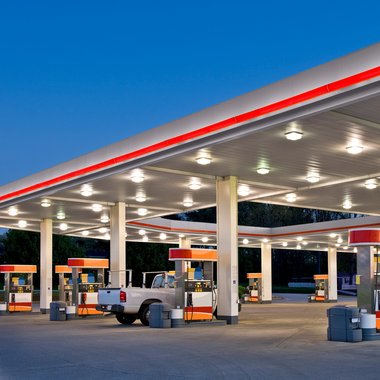
- Five minutes read
Can gas stations afford to miss the EMV at-pump deadline?
Gas stations are struggling to justify the costs of installing chip card readers. But instead of asking “can I afford to be EMV compliant?” gas station owners should be asking “can I afford not to?”
It's a little under a year until October 2020, the date that gas stations are expected to make the changeover to Europay/Mastercard/Visa (EMV) standards for accepting credit cards via their at-pump terminals.
Many gas stations are currently approaching this deadline with confusion, terrified of the price tags involved, and unsure if the benefit justify the spend. That approach might cost gas station owners their entire business. Not only will failing to meet the EMV changeover result in significant direct harm to the bottom line, it will also result in a wide range of missed opportunities that could futureproof the business.
Six reason to be ready for the EMV at-pump implementation deadline
1) Fraud is on the rise
A CardConnect study for Memorial Day 2018 found 70 credit card skimmers in operation at local gas stations. A subsequent warning was issued from the Secret Service ahead of the Fourth of July holiday that same year about eschewing pay at the pump options. With that kind of potential fraud found in just one area, it's easy to project outward to say that other areas may have a similar fraud problem afoot.
2) Gas stations are an easy target
Fraud is on the rise, but risk to those who practice fraud is falling at the same time when compared to other commerce. Fraudsters increasingly consider gas stations good targets thanks to the slow speed at which gas stations have adopted EMV security. While gas stations may not produce large returns for fraudsters, enough of them in concert can make sufficient impetus to stage comparatively risk-free fraud.
3) Being a target for fraud is a reputational risk
Some gas stations are willing to run the risk of fraud, and be charged accordingly, since the value of transactions involved are small. But there's another impact of fraudulent activity that many gas stations simply don't consider. A study from Digital Commerce 360 revealed that, for 52% of fraud victims, just being a victim of fraud was enough to negatively impact their view of the retailer. In a competitive industry, losing regular customers this way could be devasting for independent gas stations.
4) Customers are already worried
That same Digital Commerce study found that 62% of consumers aren't very confident in retailers' ability to protect their personal data. Worse, close to half (43%) of consumers reported already being a victim of fraudulent charges. If the customers are starting to get concerned, then how long before customers pass up gas stations altogether that don't have EMV systems in place? With chip-and-PIN and even contactless systems increasingly available to shoppers, more customers will actively look to ditch strip payments if they haven't already, so gas stations will need to take action accordingly.
5) Payments are a competitive edge
The first gas stations to convert to comply with EMV standards will have an immediate competitive edge over gas stations in the area. This is uncommon for gas stations; gas prices are fairly universal in any kind of radius (it takes 30 miles or more in some cases before you can even find a significant variation in gas prices). The ability to compete, therefore, must come from other sources, like offering better protection for customers' data. Since only two percent of gas stations in the US are "fully EMV-compliant", taking the plunge means an easy way to get out in front. It also helps in forming a basis for further adoption of new payment methods, including emerging methods like contactless cards and mobile wallet systems such as Apple Pay.
6) Best chance at long-term stability
With the onset of alternative fuels and transport, the future of the gas stations is debatable, especially considering reports from Nuwire Investor that the gas station may be on the decline. While electric vehicles will be a factor in the gas station market eventually, we know that there will likely always be some market for gas regardless of electric vehicles' market penetration. Gas stations have the opportunity now to improve their chances of being one of the survivors in an increasingly electric landscape. Improving the customer experience accordingly with better security will be key to this.
Time to get ahead of the competition
It's easy to see why gas stations are concerned about the upcoming EMV changeover. The potential risk might look small, and the rewards little more than an assurance of status quo. That's not the kind of margin-impacting development that moves needles for many. There are, however, many risks that haven't been so thoroughly considered, and understanding these risks should make it clear that ignoring the EMV changeover is an action done at your own risk.




